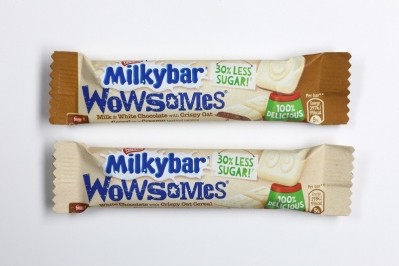‘Reducing sugar is a balancing act’: From natural sweeteners to fruity flavours

The market for reduced sugar products is expected to see steady growth through to 2025. According to market research firm Wise Guy Research, the sector is expected to post a compound annual growth rate of 9% over the next six years.
Rising levels of obesity and diabetes have created push factors including a huge awareness among consumers mindful of cutting their sugar intake. They have also spurred national regulators to back for reformulation efforts. On the pull side, low sugar options feed into growing demand from consumers for products that support health and wellness – a factor that is reflected in the focus on natural, clean label sugar replacement options.
“We are seeing increased demand for ingredients which can reduce sugar across a number of categories including beverages, dairy, bakery, confectionery and soups, sauces and dressings, with a particular demand for sweeteners from natural sources,” Olivier Kutz, Tate & Lyle category marketing manager for food & beverage solutions, explained.
Citing Mintel data, Kutz told FoodNavigator that formulations using stevia, for instance, have 'spiked' in the past two years. “It is now the third most commonly used sweetener by food and beverage manufacturers in Europe.”
“We know that many consumers are attracted to more natural sweetening solutions, they’re not willing to sacrifice great taste, which is still the dominant factor impacting buying behaviour,” Tate & Lyle’s Carolin Hackenberg-Jaretzke, senior marketing manager dairy and baby food, added.
Last year, Tate & Lyle unveiled the latest additions to its portfolio in partnership with Sweet Green Fields, one of the largest privately held, fully integrated global stevia ingredient. “These new additions provide manufacturers with more solutions to deliver cost-efficient sugar and calorie reductions across their product ranges, meeting growing consumer demand for great tasting, plant-based products that support weight management,” Kutz said.
Tate & Lyle’s portfolio of sugar replacement ingredients also includes Splenda, a ‘high potency sweetener’ suitable for a ‘wide range of applications’.
The texture challenge
When sugar is replaced with sweeteners, formulators are faced with some particular challenges to deliver the desired texture and mouthfeel. Typically, sweeteners are significantly sweeter than sucralose, meaning they are used in low levels in formulations to provide sweetness – but without the other functionalities provided by sucralose.
“Reducing sugar in formulations is a balancing act, and fibre can play a key part in sugar-reduced formulations,” Kutz explained. “Manufacturers looking to effectively reduce sugar and calories in their recipes use other ingredients alongside the high-potency sweeteners to deliver the bulk and mouthfeel that sugar provides, including fibres.”
This issue can be seen across various categories – from soft drinks to dairy.
“When it comes to dairy, a primary challenge of replacing sugar with high-potency sweeteners is the loss of solids, or bulk. The strategy we employ is to use high-potency sweeteners in combination with bulking agents to make up for this loss. For example, when reducing added sugars in ice cream, the freeze-point depression and total solids of the finished product are altered. Bulking agents and soluble fibre can again be used to depress the freezing point and enhance texture,” Hackenberg-Jaretzke added.
Taura Natural Ingredients, a subsidiary of flavorus giant IFF, will be launching a new fruit-based solution at Food Ingredients Europe next month. According to the company, the new range delivers the ‘benefits of fibre’ without compromising on taste or texture. This – the company revealed – allows food makers to deliver a healthy fibre boost while also reducing sugar by up to 15% compared to other fruit ingredients.
Sugar reduction with a functional boost
Taura R&D manager Els Vandenberghe told FoodNagivator that the company produces this like using ‘ultra rapid concentration’ (URC) technology. “URC is the unique process we use to create pure pieces of real fruit to enrich bakery and snacking products. The process is unique, because it evaporates water very quickly from heat sensitive raw materials such as fruit and vegetables without excessive heat. The process delivers great taste, differentiating texture, good colour and strong nutritionals,” the R&D expert told this publication.
The product allows a sugar reduction in some formulations thanks to its fibre content. “Taura ingredients can be used as a solution to reduce sugar while still offering a sweet eating experience… The fibres replace some of the mono- and disaccharides present in our standard fruit ingredients, which reduces the sugar content up to 30%.”
The ingredient is available as a standalone snack, a paste, or an inclusion in healthy snacks.
Significantly, the company noted, as well as reducing fibre they have the added bonus of feeding into the growing gut health trend. High-fibre is now in the top four claims for new bakery and snack product launches, and there has been a 12.8% increase in snacks with a high-fibre claim since 2016, Taura said.
Vandenberghe concluded: “Consumers are increasingly aware of the many health benefits offered by fibre, but there is a big gap between recommended intake and actual intake. This means high-fibre will continue to be an important claim, particularly in the healthy snacking sector.”


























